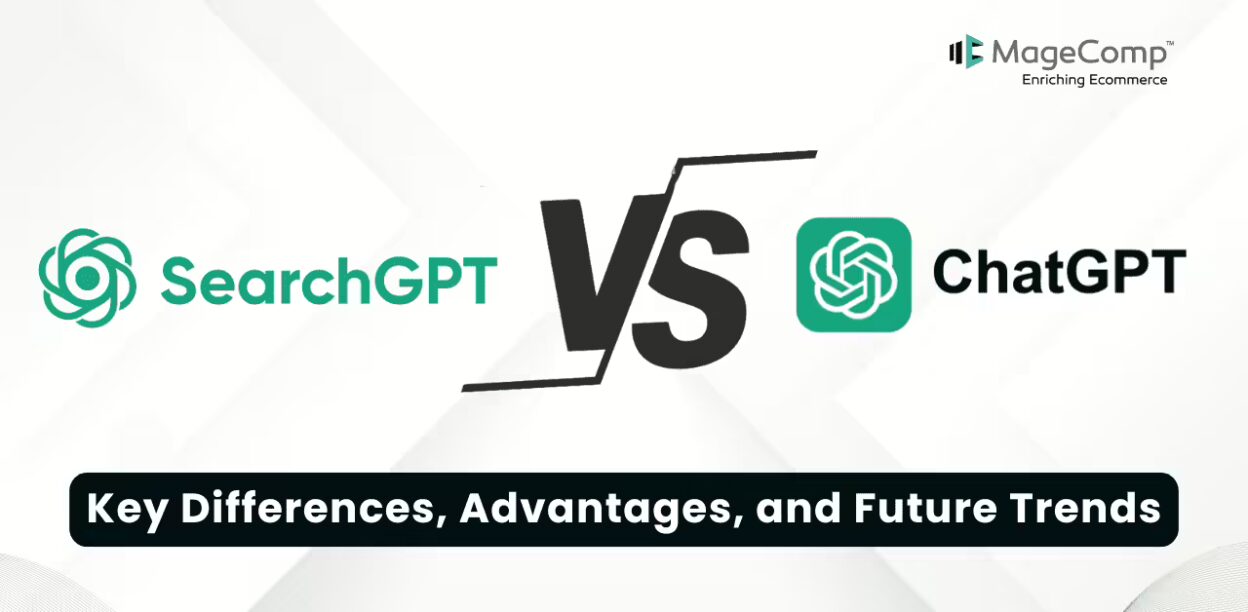In recent years, artificial intelligence (AI) has made remarkable strides, with models like ChatGPT and SearchGPT leading the charge. Both are designed to enhance user interaction and provide valuable information, but they serve different purposes and exhibit distinct functionalities. In this blog, we will explore the key differences between SearchGPT and ChatGPT, their advantages, and the future trends shaping their development.
Key Differences: SearchGPT vs. ChatGPT
Functionality and Purpose
- ChatGPT: Designed primarily for conversation, ChatGPT focuses on generating human-like responses to user inputs. It excels in providing contextual information, answering questions, and engaging users in natural dialogue. Its applications are diverse, from customer support to creative writing.
- SearchGPT: On the other hand, SearchGPT is built to optimize search experiences. It leverages the power of AI to refine search queries, deliver more relevant results, and enhance the overall efficiency of information retrieval. It is particularly useful for businesses that rely heavily on search functionality, such as e-commerce platforms and knowledge bases.
Data Utilization
- ChatGPT: Utilizes a vast amount of training data to generate responses based on patterns learned from diverse text sources. It does not have real-time internet access, which means its knowledge is limited to what it learned during training.
- SearchGPT: Integrates real-time search capabilities, allowing it to pull the latest information from the web. This makes it a more dynamic tool for users seeking current data or updates on specific topics.
User Interaction
- ChatGPT: Offers a conversational interface, allowing for back-and-forth exchanges that feel more interactive. Users can ask follow-up questions and receive tailored responses based on prior dialogue.
- SearchGPT: Primarily focuses on providing direct answers or links to relevant content based on user queries. While it may allow for some interaction, its primary goal is to streamline the search process rather than facilitate conversation.
Advantages
ChatGPT Advantages:
- Conversational Abilities: Its ability to engage in meaningful dialogues makes it ideal for applications requiring a human touch, such as virtual assistants and customer support.
- Creative Generation: ChatGPT excels in generating creative content, making it valuable for writers, marketers, and content creators.
SearchGPT Advantages:
- Real-Time Information: By utilizing real-time search, SearchGPT can provide the most current information, making it indispensable for users needing up-to-date content.
- Enhanced Search Results: It can refine search queries, leading to more relevant results and improving user satisfaction.
Future Trends
As AI continues to evolve, both SearchGPT and ChatGPT are likely to see significant advancements:
- Improved Integration: We may witness better integration of both models, combining conversational capabilities with real-time search functionality. This could result in a more cohesive user experience, where users can engage in dialogue while simultaneously retrieving the latest information.
- Contextual Understanding: Future iterations of both models will likely focus on enhancing contextual understanding, allowing them to grasp nuances in user queries more effectively. This will lead to more accurate and relevant responses.
- Personalization: Both ChatGPT and SearchGPT are expected to evolve toward greater personalization. By learning from individual user preferences and behaviors, they can deliver tailored experiences, making interactions more meaningful.
- Ethical Considerations: As AI technology progresses, ethical considerations regarding data privacy, misinformation, and bias will become increasingly important. Developers will need to prioritize transparency and accountability in AI deployments.
Conclusion
In summary, while ChatGPT and SearchGPT serve distinct purposes within the AI landscape, they both contribute to enhancing user experiences in their respective domains. As technology continues to advance, we can expect to see further innovations that leverage the strengths of both models, leading to more intuitive, interactive, and efficient AI systems. Embracing these changes will empower users and businesses alike to harness the full potential of AI in their daily interactions and decision-making processes.





